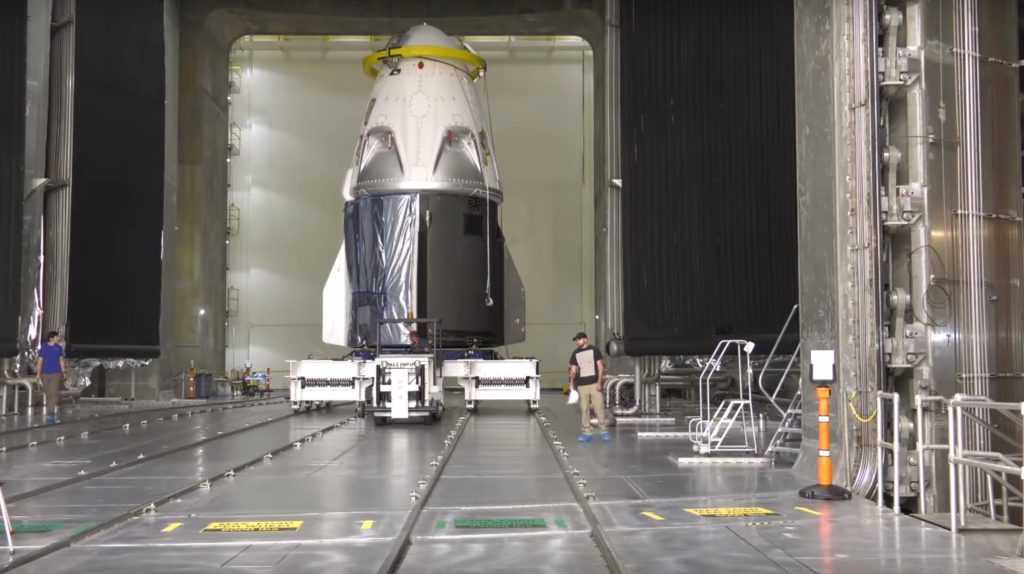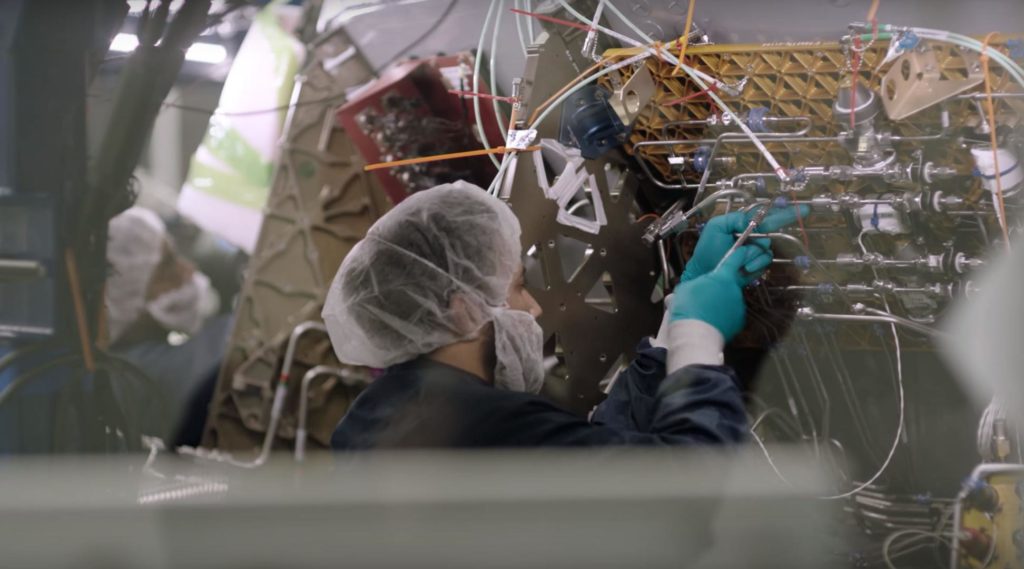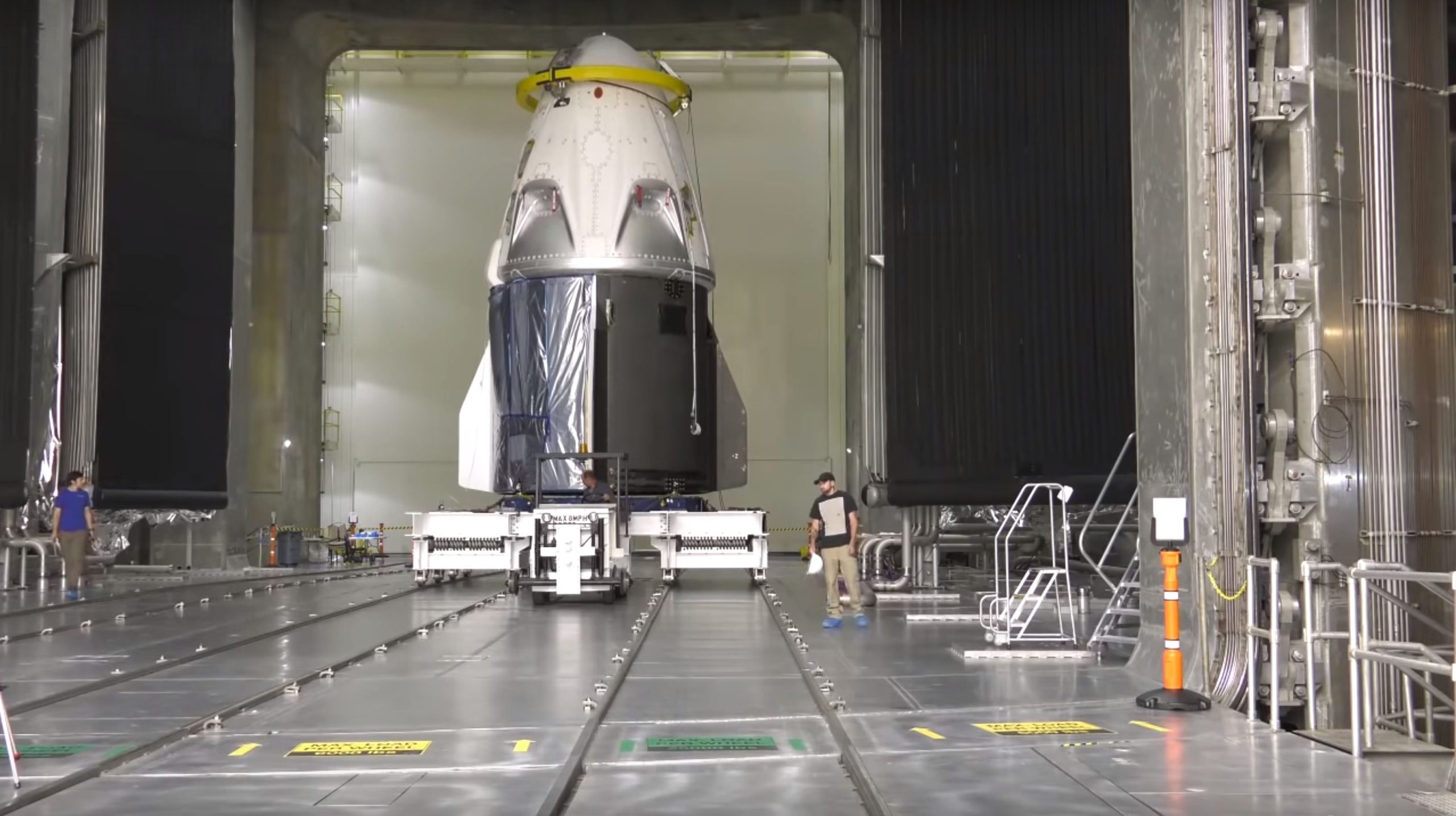
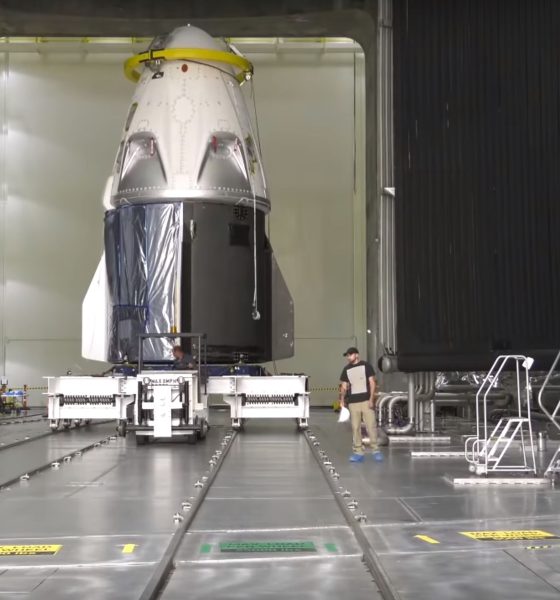
News
SpaceX and NASA reaffirm Crew Dragon’s January 2019 launch debut target
After what can only be described as an attempt to sandbag the official launch schedule, NASA administrator James Bridenstine remains alone in his public implication that the date for SpaceX’s first Crew Dragon test flight (DM-1) is so uncertain that “the first half of 2019” was the closest he would get to an estimate.
Such an uncertain estimate would normally be par for the course of NASA’s Commercial Crew Program (CCP), but the fact remains that SpaceX and NASA have recently filed for and received specific launch date allotments for Crew Dragon’s DM-1 launch, dates little more than 4-6 weeks away from today.
At the NAC HEO meeting, Bill Gerstenmaier says the SpaceX Demo-1 mission is planned “towards the end of January.”
— Jeff Foust (@jeff_foust) December 6, 2018
As such, the fact that NASA associate administrator Bill Gerstenmaier – a critical hands-on leader of NASA’s commercial and exploration programs – specifically stated that NASA and SpaceX are targeting DM-1’s launch in January is an unusually stark indication that the two senior NASA officials are not reading from the same script, so to speak. The reasons for the dramatic differences in official statements separated by just one week are hard to parse and would inevitably tread into waters of pure speculation and political machinations.
What is far more important is that Gerstenmaier – backed up by Phil McCalister, NASA Director of Commercial Spaceflight – reaffirmed that NASA is planning for the first orbital, uncrewed launch of SpaceX’s Crew Dragon as early as January 2019, albeit with a slight 10-day slip since the last specific launch date (January 7) was announced.
Speaking before and after Falcon 9’s recent launch of Cargo Dragon (CRS-16) on December 5th, SpaceX VP of Launch and Build Reliability Hans Koenigsmann added yet another voice to the chorus, stating that he and SpaceX were extremely confident that all the physical hardware and software aspects of Crew Dragon would be ready to launch no later than January 7th.
NASA’s Phil McAlister updates the status of SpaceX’s Demo-1 Crew Dragon spacecraft, and says the company aims to have all hardware ready by Dec. 20, then will stand down for the holidays before resuming launch preps in January. pic.twitter.com/XDubh95PEV
— Stephen Clark (@StephenClark1) December 6, 2018
Why so uncertain?
It’s impossible to fully delve into the complex political and bureaucratic intricacies of modern NASA, but the uncertainty within NASA and the deltas between NASA and SpaceX’s official statements can generally be explained by the simple fact that a number of critical final reviews have yet to be completed, reviews that will offer the final determination of when or if Falcon 9 and Crew Dragon are ready to launch.
Depending on the results of those readiness reviews, DM-1 could be given the go-ahead to launch in January or it could be delayed six months because NASA wants SpaceX to change a number of critical spacecraft systems, two extreme sides of what can be best described as a spectrum of possibilities.
In other words, SpaceX’s Koenigsmann and NASA’s Gerstenmaier and McCalister have since implied that they are confident that those final reviews will look favorably upon launch dates that approximate “ASAP”. Bridenstine, while technically the head of NASA, can thus be treated as a dissenting or outlier opinion in this case, presumably offering a worst-case-scenario of when SpaceX might be able to launch DM-1 if final reviews go very badly.
- SpaceX technicians move the integrated DM-1 Crew Dragon during a vacuum chamber test campaign. (SpaceX)
- A SpaceX employee works on the Crew Dragon assigned to DM-2, the first launch with astronauts aboard. (SpaceX)
- SpaceX installed its Crew Access Arm (CAA) in September 2018. (Tom Cross)
Bridenstine and Koenigsmann’s comments are worth looking at in a bit more depth, subtly but unequivocally pointing to the differences in opinion between NASA and SpaceX that clearly still float just beneath the public surface. Asked about Bridenstine’s suggestion that DM-1 could slip quite a bit, Koenigsmann offered a skeptical but levelheaded response:
“What I could see is a [slip of a] couple of days because of [Space Station] traffic. For example, CRS-16 (Cargo Dragon) is on station at the same time, lots of traffic, lots of crew time requirements, but our target is – at this point in time – mid-January, and we’re pushing as hard and [as diligently] as we can for this particular launch.”
In fact, it appears that NASA and SpaceX concluded, around the same point in time, that a new target of January 17th was preferable to account for the logistical scheduling concerns highlighted by Hans in the above quote, allowing 10 extra days for the International Space Station (ISS) crew to complete other spacecraft operations before Crew Dragon’s planned arrival.
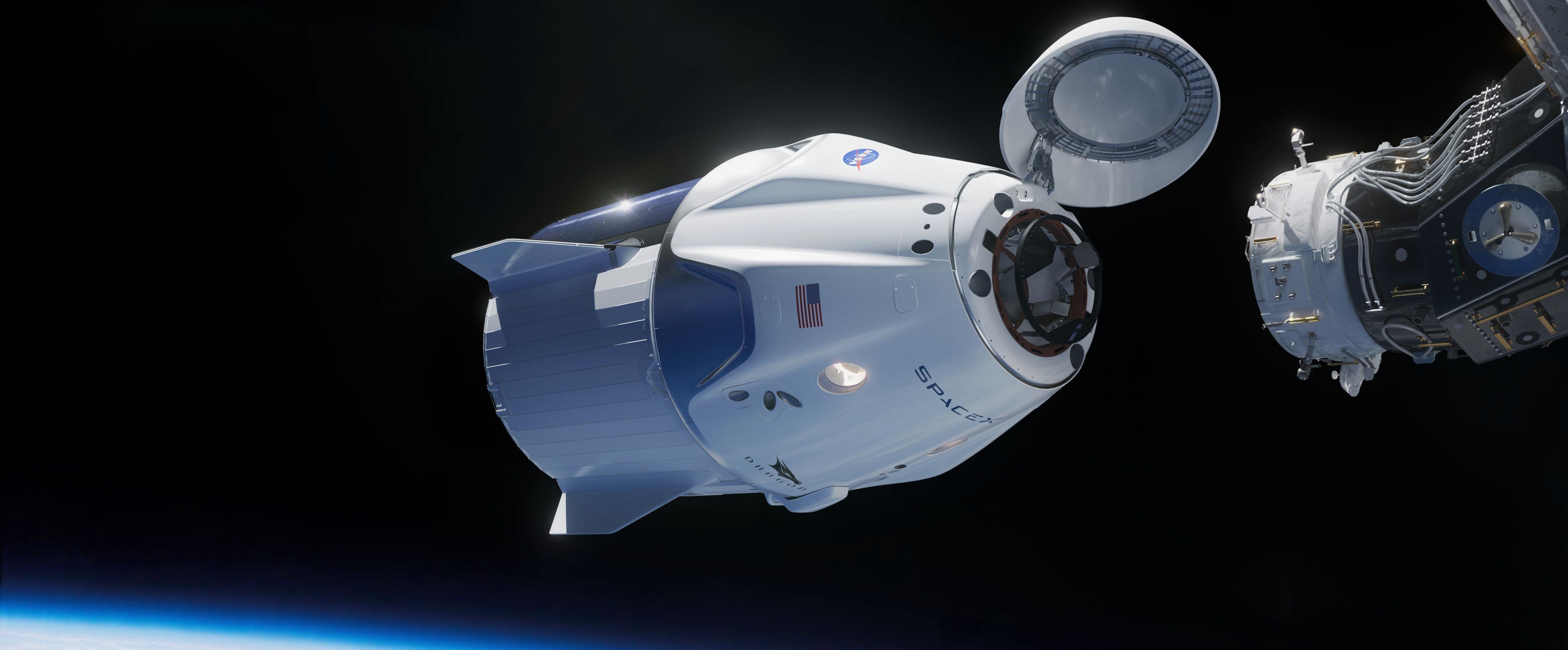
Even more intriguingly, local reporter Ken Kremer followed up with a question specifical triggered by Bridenstine’s suggestion (according to USA Today) that “challenges” with Crew Dragon’s landing parachutes were a leading factor in the unlikelihood of a January launch. Hans responded in his usual deadpan style:
“No; we’re working through issues, obviously, I mean every launch has things that we work through to make sure they work fine. [Dragon 2’s parachutes] actually have more redundancy than those on Dragon 1 and they are also [structurally] reinforced on Demo-1, so pretty sure [they’re] gonna be successful.”
Now we wait.
For prompt updates, on-the-ground perspectives, and unique glimpses of SpaceX’s rocket recovery fleet check out our brand new LaunchPad and LandingZone newsletters!

News
Tesla hints at Starlink integration with recent patent
“By employing polymer blends, some examples enable RF transmission from all the modules to satellites and other communication devices both inside and outside the vehicle.”

Tesla hinted at a potential Starlink internet terminal integration within its vehicles in a recent patent, which describes a vehicle roof assembly with integrated radio frequency (RF) transparency.
The patent, which is Pub. No U.S. 2025/0368267 describes a new vehicle roof that is made of RF-transparent polymer materials, allowing and “facilitating clear communication with external devices and satellites.”
Tesla believes that a new vehicle roof design, comprised of different materials than the standard metallic or glass elements used in cars today, would allow the company to integrate modern vehicular technologies, “particularly those requiring radio frequency transmission and reception.
Tesla has recently filed a US patent application on integrating RF transparent materials into the roof structure.
“facilitating clear communication with external devices and satellites”
Tesla fleet is getting @Starlink connectivity integration soon. LFG @Tesla @elonmusk… pic.twitter.com/bLa8YtPLd1
— Chansoo Byeon (@Chansoo) December 9, 2025
Instead of glass or metallic materials, Tesla says vehicles may benefit from high-strength polymer blends, such as Polycarbonate, Acrylonitrile Butadiene Styrene, or Acrylonitrile Styrene Acrylate.
These materials still provide ideal strength metrics for crashworthiness, stiffness for noise, vibration, and harshness control, and are compliant with head impact regulations.
They would also enable better performance with modern technologies, like internet terminals, which need an uninterrupted signal to satellites for maximum reception. Tesla writes in the patent:
“By employing polymer blends, some examples enable RF transmission from all the modules to satellites and other communication devices both inside and outside the vehicle.”

One of the challenges Tesla seems to be aware of with this type of roof design is the fact that it will still have to enable safety and keep that at the forefront of the design. As you can see in the illustration above, Tesla plans to use four layers to increase safety and rigidity, while also combating noise and vibration.
It notes in the patent that disclosed examples still meet the safety requirements outlined in the Federal Motor Vehicle Safety Standards (FMVSS).
Starlink integrated directly into Tesla vehicles would be a considerable advantage for owners. It would come with a handful of distinct advantages.
Initially, the inclusion of Starlink would completely eliminate cellular dead zones, something that is an issue, especially in rural areas. Starlink would provide connectivity in these remote regions and would ensure uninterrupted service during road trips and off-grid adventures.
It could also be a critical addition for Robotaxi, as it is crucial to have solid and reliable connectivity for remote monitoring and fleet management.
Starlink’s growing constellation, thanks to SpaceX’s routine and frequent launch schedule, will provide secure, stable, and reliable internet connectivity for Tesla vehicles.
Although many owners have already mounted Starlink Mini dishes under their glass roofs for a similar experience, it may be integrated directly into Teslas in the coming years, either as an upgrade or a standard feature.
News
Tesla supplements Holiday Update by sneaking in new Full Self-Driving version
It seems Tesla was waiting for the Hardware 4 rollout, as it wanted to also deploy a new Full Self-Driving version to those owners, as it appeared in the release notes for the Holiday Update last night.

Tesla has surprised some owners by sneaking in a new Full Self-Driving version with the wide release of the Holiday Update, which started rolling out to Hardware 4 owners on Friday night.
Tesla has issued a controlled and very slow release pattern with the Holiday Update, which rolls out with Software Version 2025.44.25.5.
For the past two weeks, as it has rolled out to Hardware 3 and older Tesla owners, the company has kept its deployment of the new Software Version relatively controlled.
It seems Tesla was waiting for the Hardware 4 rollout, as it wanted to also deploy a new Full Self-Driving version to those owners, as it appeared in the release notes for the Holiday Update last night.
Tesla Full Self-Driving v14.2.1.25 made its first appearance last night to Hardware 4 owners who are members of the Early Access Program (EAP). It appears to be a slight refinement from FSD v14.2.1, which has been out for a couple of weeks.
Tesla v2025.44.25.5 Holiday update incoming
Also Full Self-Driving v14.2.1.25!!! pic.twitter.com/74D7S0UGXz
— TESLARATI (@Teslarati) December 13, 2025
Many owners welcome the new FSD version, us included, because we’ve been less than impressed with v14.2.1. We have experienced some minor regressions with v14.2.1, especially with Speed Limit recognition, Speed Profile tinkering, and parking performance.
As it stands, Full Self-Driving is still particularly impressive, but Tesla is evidently having an issue with some of the adjustments, as it is still refining some of the performance aspects of the suite. This is expected and normal with some updates, as not all of them are an improvement in all areas; we routinely see some things backtrack every once in a while.
This new FSD version is likely to take care of those things, but it also includes all of the awesome Holiday Update features, which include:
- Grok with Navigation Commands (Beta) – Grok will now add and edit destinations.
- Tesla Photobooth – Take pictures inside your car using the cabin-facing camera
- Dog Mode Live Activity – Check on your four-legged friend on your phone through periodic snapshots taken of the cabin
- Dashcam Viewer Update – Includes new metrics, like steering wheel angle, speed, and more
- Santa Mode – New graphics, trees, and a lock chime
- Light Show Update – Addition of Jingle Rush light show
- Custom Wraps and License Plates – Colorizer now allows you to customize your vehicle even further, with custom patterns, license plates, and tint
- Navigation Improvements – Easier layout and setup
- Supercharger Site Map – Starting at 18 pilot locations, a 3D view of the Supercharger you’re visiting will be available
- Automatic Carpool Lane Routing – Navigation will utilize carpool lanes if enabled
- Phone Left Behind Chime – Your car will now tell you if you left a phone inside
- Charge Limit Per Location – Set a charge limit for each location
- ISS Docking Simulator – New game
- Additional Improvements – Turn off wireless charging pad, Spotify improvements, Rainbow Rave Cave, Lock Sound TRON addition
Tesla also added two other things that were undocumented, like Charging Passport and information on USB drive storage to help with Dashcam.
Cybertruck
Tesla updates Cybertruck owners about key Powershare feature

Tesla is updating Cybertruck owners on its timeline of a massive feature that has yet to ship: Powershare with Powerwall.
Powershare is a bidirectional charging feature exclusive to Cybertruck, which allows the vehicle’s battery to act as a portable power source for homes, appliances, tools, other EVs, and more. It was announced in late 2023 as part of Tesla’s push into vehicle-to-everything energy sharing, and acting as a giant portable charger is the main advantage, as it can provide backup power during outages.
Cybertruck’s Powershare system supports both vehicle-to-load (V2L) and vehicle-to-home (V2H), making it flexible and well-rounded for a variety of applications.
However, even though the feature was promised with Cybertruck, it has yet to be shipped to vehicles. Tesla communicated with owners through email recently regarding Powershare with Powerwall, which essentially has the pickup act as an extended battery.
Powerwall discharge would be prioritized before tapping into the truck’s larger pack.
However, Tesla is still working on getting the feature out to owners, an email said:
“We’re writing to let you know that the Powershare with Powerwall feature is still in development and is now scheduled for release in mid-2026.
This new release date gives us additional time to design and test this feature, ensuring its ability to communicate and optimize energy sharing between your vehicle and many configurations and generations of Powerwall. We are also using this time to develop additional Powershare features that will help us continue to accelerate the world’s transition to sustainable energy.”
Owners have expressed some real disappointment in Tesla’s continuous delays in releasing the feature, as it was expected to be released by late 2024, but now has been pushed back several times to mid-2026, according to the email.
Foundation Series Cybertruck buyers paid extra, expecting the feature to be rolled out with their vehicle upon pickup.
Cybertruck’s Lead Engineer, Wes Morrill, even commented on the holdup:
As a Cybertruck owner who also has Powerwall, I empathize with the disappointed comments.
To their credit, the team has delivered powershare functionality to Cybertruck customers who otherwise have no backup with development of the powershare gateway. As well as those with solar…
— Wes (@wmorrill3) December 12, 2025
He said that “it turned out to be much harder than anticipated to make powershare work seamlessly with existing Powerwalls through existing wall connectors. Two grid-forming devices need to negotiate who will form and who will follow, depending on the state of charge of each, and they need to do this without a network and through multiple generations of hardware, and test and validate this process through rigorous certifications to ensure grid safety.”
It’s nice to see the transparency, but it is justified for some Cybertruck owners to feel like they’ve been bait-and-switched.
